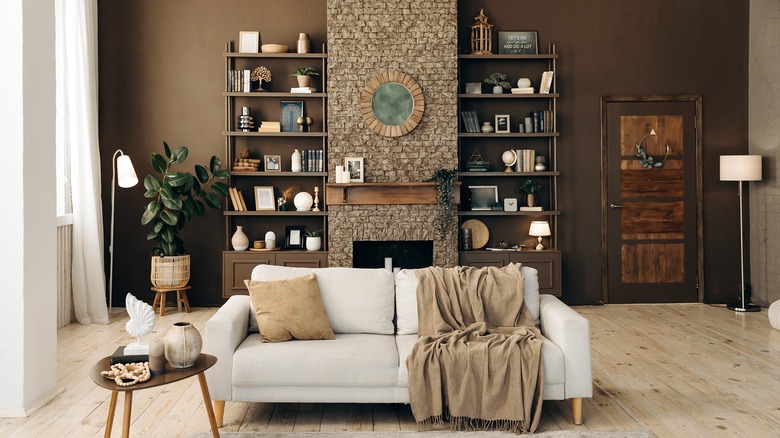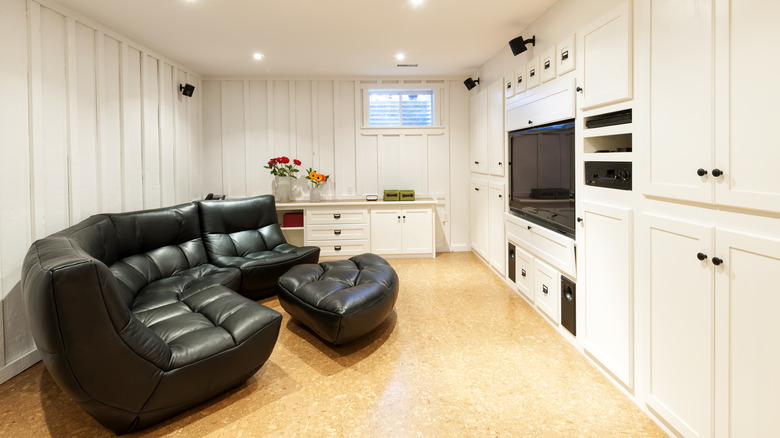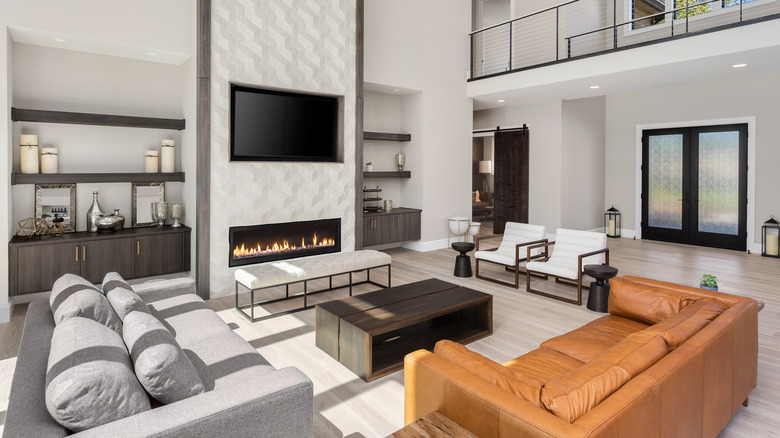A Design Expert Shares Why Ample Open Shelving May Not Belong In Your Living Room
We may receive a commission on purchases made from links.
The largest argument against using open shelving in the living room is the clutter it can create. This can be more of an issue than kitchen open shelving, as typically only dishes are stored there, but in the living room, the display could be a jumble of any number of mismatching items. As interior designer Caroline Winkler explains, "Too much open storage credenza, bookcases, and shelves can create visual clutter which will immediately exhaust your eye and make the space feel visually busy," via Homes & Gardens.
However, at the same time, Winkler doesn't think you should remove your open shelving completely. Instead, she says, "The biggest way to help yourself out in the living room is to minimize your open shelving and open storage. Some open shelving is great and can be a very effective way to open up the space and break up too much cabinetry. But just keep it in balance with some closed storage as well." A great example of this balance is using shelving units that also have closed cabinets on the bottom, so you can display certain items and hide others away.
Storage options besides open shelving
If the clutter on the open shelving in your living room is causing you stress, one option is to convert some of the shelves into closed cabinets by adding doors. Alternatively, there are also a number of furniture pieces you could add to your living room to address the shelving clutter. For instance, if you have a large collection of books, a storage cabinet with a door, like this 72-inch cabinet from Amazon, may be your best option. Or, maybe you have lots of knickknacks, in which case a credenza, such as this one from Wayfair, could work for you. When using these types of pieces, be mindful to limit what you display on top of them, as too many items could also contribute to visual clutter.
Another option is seating that doubles as storage, such as a round ottoman. Similarly, there are also long storage benches, like this one from Pottery Barn, that you could place underneath a window. These pieces are best used for items like blankets and pillows, or any soft items that can be pushed into a tight space without getting damaged.
How to avoid visual clutter on open shelving
As interior designer Caroline Winkler says, open shelves themselves aren't the enemy. The problem arises when there are either too many shelves in your living room space or they're not styled properly. Because of this, once you've balanced your open and closed storage, it's time to design your shelves so that they look orderly and peaceful instead of chaotic.
One of the best ways to do this is by focusing on using larger items over smaller ones. Tiny knickknacks may be fun to collect but they can also create clutter, especially if you can't see the item clearly while sitting on the couch. If you want to keep these items in the living room, store them inside a decorative bin or basket, which will streamline your design. Further, leaving at least 20% of each shelf empty will also make your home feel less overwhelming. Finally, when cultivating items for your shelves, try to stick to a color palette or a certain style, as this will keep the display from looking out of control.


